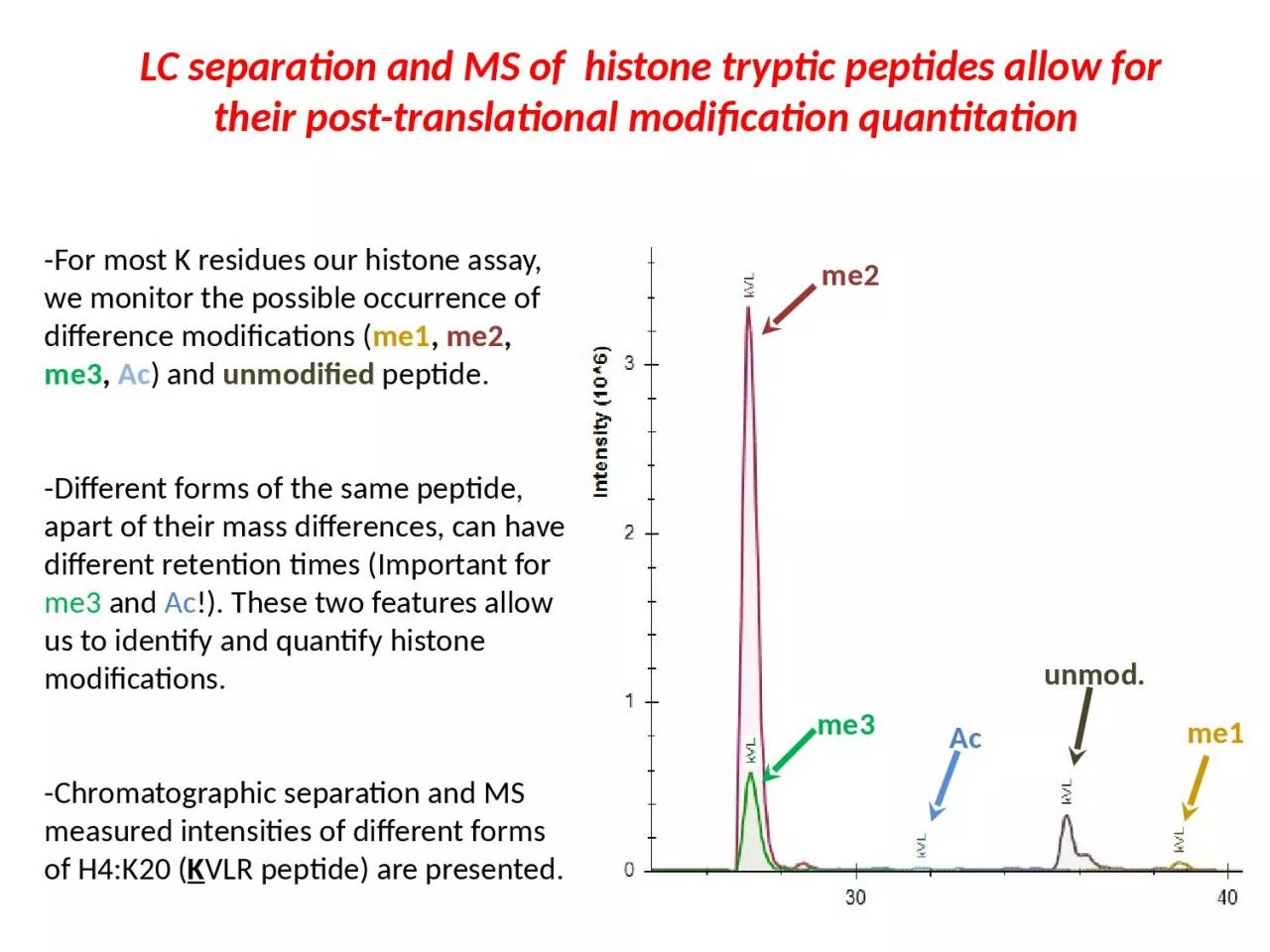

quantitation For most K residues our histone assay we monitor the possible occurrence of difference modifications m e1 m e2 m e3 Ac and unmodified peptide Different forms of the same peptide apart of their mass differences can have different retention times ID: 934150
Download Presentation The PPT/PDF document "LC separation and MS of histone tryptic..." is the property of its rightful owner. Permission is granted to download and print the materials on this web site for personal, non-commercial use only, and to display it on your personal computer provided you do not modify the materials and that you retain all copyright notices contained in the materials. By downloading content from our website, you accept the terms of this agreement.
Slide1
LC separation and MS of histone tryptic peptides allow for their post-translational modification quantitation
-For most K residues our histone assay, we monitor the possible occurrence of difference modifications (me1, me2, me3, Ac) and unmodified peptide. -Different forms of the same peptide, apart of their mass differences, can have different retention times (Important for me3 and Ac!). These two features allow us to identify and quantify histone modifications. -Chromatographic separation and MS measured intensities of different forms of H4:K20 (KVLR peptide) are presented.
m
e2
m
e3
Ac
u
nmod
.
m
e1
Slide2MRM-multi reaction monitoring -Our histone assay is targeted type of analysis based on MRM (multi reaction monitoring) technology
-It means that triple-quad mass spectrometer is programmed to fragment only specific precursor peptides and measure intensity of specific products ions-For example for unmodified AKAKTR peptide:double charged parent ion 421.7584 ++ was fragmented at retention time 31.4 min. resulting in series of product ions :y4 531.3249+y3 460.2878+b2 312.1918+-Only these specific ions are monitored and use for quantitation. We call them peptide transitions.
Slide3Example of MRM analysis for unmodified peptide AKAKTR from H2A histone MRM event (which we called peptide transition) is repeated in each technical replicate of sample. Different line colors represent 3 different transition specific for unmodified H2A:
AKAKTR peptide
tech repl.1
tech repl.2
tech repl.3
tech repl.2
tech repl.1
tech repl.3
Slide4MRM analysis in quantitation of histone posttranslational modifications
Final results shown as percent of given modification in total pule of given peptide which was quantified. Error bars are are +/- one standard deviation obtained from sample technical replicate intensities.Relative quantitation of posttranslational modifications for H4: K20 residue (KVLR peptide) for single sample is presented.
Slide5MRM analysis in quantitation of histone posttranslational modifications
Finally, results for many samples can be plotted simultaneously showing changes of relative abundances of histone mark modification. Relative quantitation of posttranslational modifications for H4: K20 residue (KVLR peptide) for 6 different samples shown.